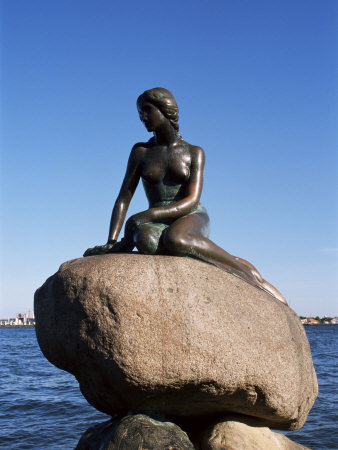Eighteenth-century Scandinavian Merfolk September 7, 2011
Author: Beach Combing | in : Modern , trackback
Here are a number of largely overlooked Scandinavian reports of mermaids dating from the first half of the eighteenth century. The account is rather long so these are the witness statements. Historians of cryptozoology might be interested to know that the earlier part of the text includes a reference to mermaids being ‘sea-apes’, an idea that was to become fashionable post Darwin: is this the first time that this idea occurs? drbeachcombing AT yahoo DOT com
As to the animals described here: could a West African Manatee have got washed off course?!?!!
[The author] informs us, that in the diocese of Bergin, and the manor of Nordland, are several hundred persons of credit and reputation, who affirm, with the strongest assurance, that they have seen this creature sometimes at a distance, and at other times close to their boats, erect and formed like a human creature down to the middle; the rest they could not see. Our author has examined several of the witnesses with all possible precaution, and found them agree invariably with the description published by Jablonsky and Kircher. He brings an evidence who had seen one out of the water, and handled it, viz the Rev. Mr Peter Angel, minister at Sundmoer, living when this history was wrote, and who declares, that in 1719, being then twenty years old himself, himself and several other inhabitants saw a mer-man, dead on a point of land, with several sea-animals. Its length was three fathoms, its colour grey, the lower part like a fish, with a porpoise’s tail. The face resembled a man’s with a mouth, forehead, eyes etc. The nose was flat and pressed down to the face in which the nostrils were very visible. The breast was near the head, the arms, which seemed to hang by the side, were joined by a thin membrane, and the hands, to appearance, were like the paws of a sea-calf. Mr Strom, another clergyman, informed him, that at Neroe, in Numedalen, a mer-man, and a sea calf were both found dead on a rock, all bloody, from whence it was conjectured they had killed each other. It is, indeed, analogous enough, that a seaman should covet a repast of sea veal. Mr Randulf, rector of the place, endeavoured to preserve the merman, but the peasants had unluckily cut both to pieces for the fat. In regard to the size they differ remarkably, according to the fishermen, from that called mar-male or mar-maete (the different sexes) which our author calls a well-known sea-animal, and thinks it may be a dwarf of the same species. This is often caught on hooks, is of different sizes, from that of a child of one year old, to three; and the bishop thinks, till it is further enquired into, it may be supposed, though he does not affirm it to be, the infant of the former. But the strongest and then latest proof of the mer-man’s existence happened in Denmark and may properly conclude this article. On September 20, 1723, three ferrymen, viz. Peter Gunnersen, Nicholas Jensen, and Jappe Jensen, were, by his Majesty’s orders, examined under oath before Fred. Van Gram, privy-councellor, and deposed in substance. That two months before, being towing a ship arrived in the Baltic, at the distance of a quarter of a Norway mile, they rowed up to something floating like a dead body. When they came within seven or eight fathoms, it appeared as a first, for it had not stirred, but sunk at that instant, and came up again immediately almost at the same place. Frightened at this, they lay still, and letting the boat float, the monster, by the help of the current, came still nearer to them. He turned his face, and stared at the men, which them a good opportunity of examining him narrowly. He stood in the same place for a half a quarter of an hour, and was seen above the water down to his breast. At last apprehending some danger, they began to retire, on which he blew his cheeks, and made a kind of roaring noise, and dived, without rising in their sight. He appeared to them like a strong-limbed, broad-shouldered old man, his head small in proportion, with short curled black hair, with a black beard, that looked like a cut one, his eyes deep in his head, his skin coarse, and very hairy. Gunnersen added (which the others did not observe) that from the body downwards he was quite pointed like a fish; and deposed, at the same time, that about twenty years before, he had seen near Kulleor, a mer-maid, with long hair and long breasts. The weather was fine and calm. That this examination was taken in the most regular and exact manner is attested by Andrew Bussaeus.


